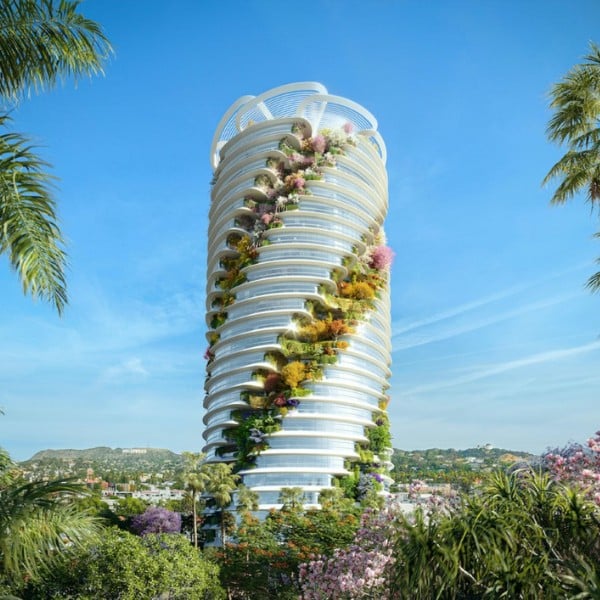
Yet another organization is making strides toward helping ordinary citizens spend time in outer space. The Gateway Foundation has announced plans to build the world's first space hotel, with an aim to have 100 tourists per week by 2025. Named after controversial rocket scientist Wernher von Braun, who was affiliated with the Nazi party early in his career and later went on to serve as director of NASA's Marshall Space Flight Center, the Von Braun Space Station will be assembled on-site by robots and drones.
Designer Tim Alatorre was inspired by concepts von Braun described in the 1950s. The space hotel will be shaped like an enormous wheel that spans a 623-foot diameter and slowly rotates to generate a gravitational force. Twenty-four pressurized pods dot the outer ring of the wheel. These interconnected modules will include private residences, as well as hotel rooms and separate quarters for the station's crew working. Several modules will also be sold to governments that wish to use them as research centers.
Since this space is serving as a vacation destination, guests can also expect amenities. There are plans for bars, restaurants, and a gym so that visitors will be able to eat well and stay fit even if they're in outer space. By building on the technology of the International Space Station, the Von Braun Space Station is looking to have a permanent population of about 400 residents who will feel right at home thanks to some specific choices the designers are making. The hotel will simulate lunar gravity, making it the first station of its kind to have artificial gravity and ensuring that your belongings won't be flying around in the air.

There's also been careful attention paid to the interiors, with the designers shying away from a minimalist, futuristic look in favor of warmth and comfort. “In the movie 2001: A Space Odyssey, Stanley Kubrick's Space Station 5 is a sterile, white, museum-like hotel. While it made for a clearly futuristic feeling in the movie, in reality, it wasn't a very inviting space. As humans, we innately connect to natural materials and colors,” Alatorre tells Dezeen. “Developments in material science now allow for lightweight, easily cleanable natural material substitutes for stone and wood that would normally not be feasible to bring into orbit. The use of fabrics, warm-colored lighting and paints, and materials with texture, all help us to connect and feel at home.”
It's an exciting time in history for space travel, with organizations like the Gateway Foundation and Space X looking at how to make these opportunities open to everyone. Alatorre is confident that we're on the brink of a breakthrough that will see more and more people rocketing into space.
“Eventually, going to space will just be another option people will pick for their vacation, just like going on a cruise, or going to Disney World,” he predicts.
The Von Braun Space Station is the world's first space hotel.

Set to open in 2025, the hotel hopes to host 100 curious space travelers a week.

Warm interiors help ground the space, which will have artificial gravity.























































































